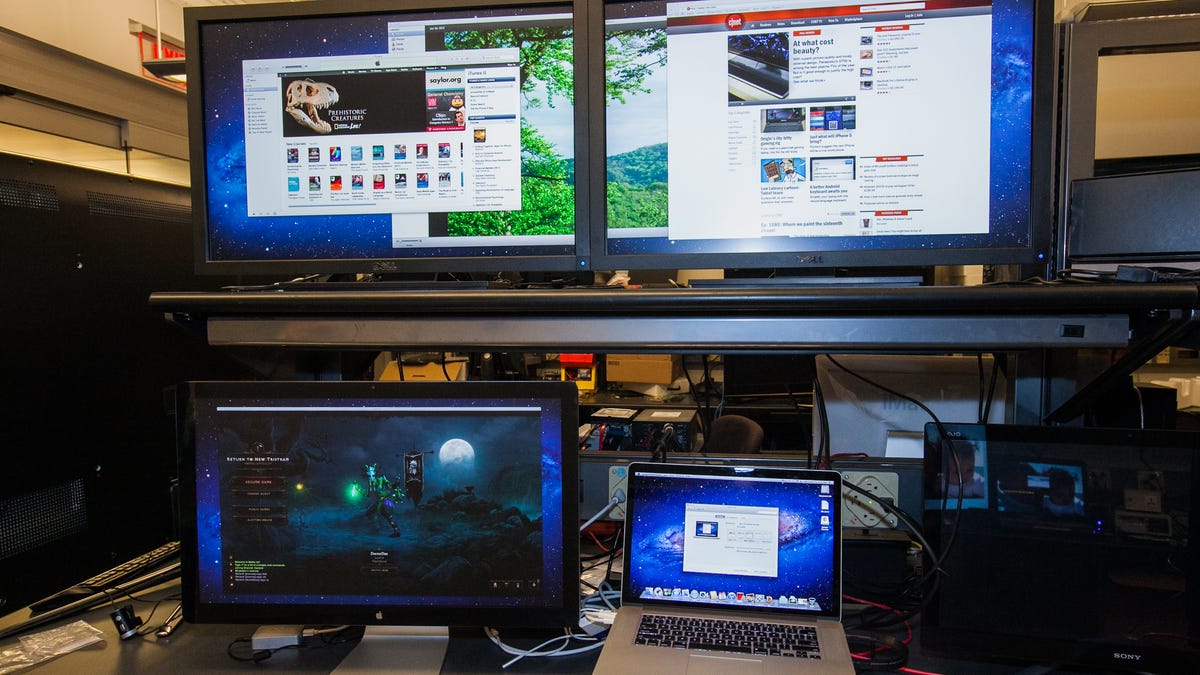How to power four simultaneous screens with the Retina MacBook Pro
With dual DisplayPort and HDMI, the MacBook Pro with Retina Display has a surprising number of video connections. See them all in action here.

The new MacBook Pro with Retina display has many noteworthy features, from a unique 2,880x1,800-pixel screen to new Nvidia graphics to large SSD storage options. But, the most surprising may be the multiple video outputs -- something not seen on a MacBook before now.
The last several generations of MacBook have had either a mini-DisplayPort or combo Thunderbolt/DisplayPort jack. HDMI has been on our most-wished-for lists for years, so Apple finally adding HDMI (which is found on pretty every other current laptop) is a big move, especially when combined with a second Thunderbolt port.
The initial review of the Retina Pro was largely concerned with CPU/GPU performance, the high-res display, and battery life. Now that I've had a little extra time to spend with the system, there's a chance to look at some areas in more detail. One of the first follow-up questions I received was: "Can the Retina Pro do multiple video outputs?"
The easiest way to test that was simply to get a few monitors together and try hooking everything up. Step One was to connect a 27-inchApple Thunderbolt display via that monitor's built-in Thunderbolt cable. The second external monitor was a 30-inch Dell Ultrasharp U30, which was connected via a DisplayPort to VGA adapter. Finally, I connected a second Dell U30 to the MacBook's HDMI port.
As you can probably guess from the headline, all three external monitors connected successfully. Along with the MacBook's built-in Retina Display, that gave us four working simultaneous screens.
Using the Display menu under System Preferences, I could set the three external monitors to either mirror or extend the main screen, and then arrange them in virtual space by dragging and dropping icons for each of the screens (to line up, for example, the tops or bottoms of the displays). My extended desktop was a little awkward, as I was using different size displays with different resolutions. Interestingly, the Dell monitor connected via DisplayPort/VGA was able to display 1,920x1,200 pixels, while the exact same display, hooked up via HDMI, could display up to 2,048x1,280 pixels.
But, before you go hooking up every spare monitor you can find, note that the frame rate on the Diablo III window I had running on the external Apple monitor definitely started to slow down when all four screens were running (with Web browsers and iPhoto on the other screens).
Is this anything you're likely to use? Perhaps not, but I regularly use two monitors, and can see this being useful for photo or video editing, or other MacBook-centric tasks. Either way, adding that HDMI output makes it much easier to get an external monitor connected to the Retina MacBook Pro.
Do you use external monitors with your laptop? Would three be more useful than one or two? Let us know what you think in the comments section below.

